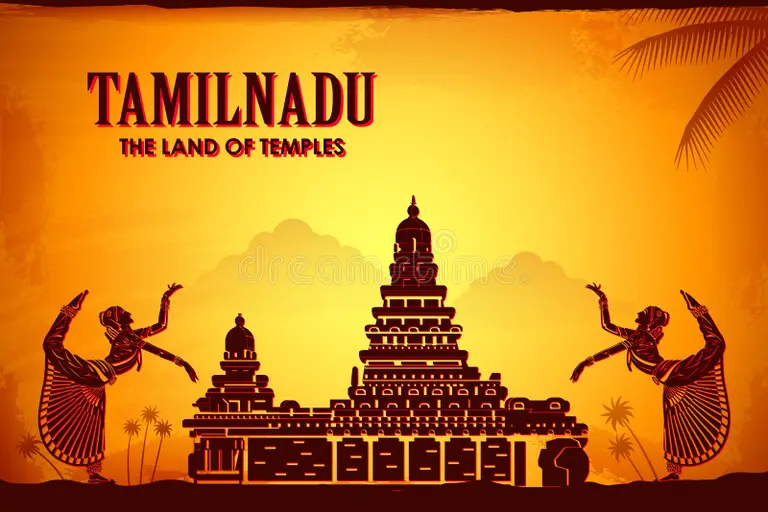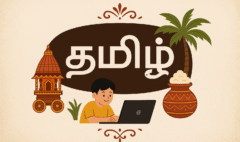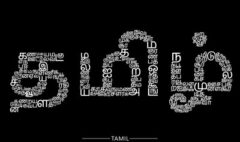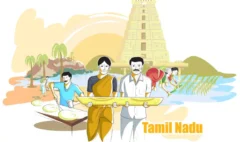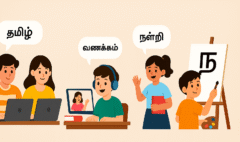The Role of Tamil in Indian Mythology and Epics
The Role of Tamil in Indian Mythology and Epics
The Divine Narratives: Exploring the Unique Role of Tamil in Indian Mythology and Epics
The subcontinent of India is a land held together by a vast and intricate web of stories. These are the grand narratives of mythology and the epic tales of gods, goddesses, heroes, and demons that have shaped the culture, philosophy, and spiritual life of its people for millennia. Within this grand tradition, the Tamil language plays a unique and profoundly significant role. It is not merely a recipient of the pan-Indian Puranic and epic traditions; it is a powerful creator and shaper of its own distinct mythology and a masterful re-interpreter of the larger narratives. The world of Tamil mythology (புராணம் – puraanam) is a rich and vibrant landscape, populated with its own unique deities, sacred geographies, and philosophical insights. The great Tamil epics are not just translations, but brilliant, culturally specific recreations that stand as monumental works of literature in their own right. For the language learner, exploring these spiritual stories in Tamil is a journey into the very soul of the culture. This guide will explore the special role that Tamil plays in the world of Indian mythology, introducing you to key narratives and the essential mythological vocabulary that will unlock a deeper, more profound understanding of the language and its spiritual heritage.
Beyond Sanskrit: Tamil as a Divine Language
While Sanskrit is the language of the Vedas and many of the major Puranas, the Tamil tradition holds its own language to be equally divine. This is a crucial concept to understand. The Bhakti movement, a wave of devotionalism that swept the Tamil lands, established Tamil as a primary language of worship and spiritual expression. The sacred hymns of the Alvars and Nayanars, known as the “Dravida Veda” (the Tamil Veda), cemented the idea that one could approach the divine through the mother tongue. This linguistic pride and spiritual confidence allowed for the development of a mythology that was deeply rooted in the Tamil land and its unique culture.
Murugan (முருகன்): The Quintessential Tamil God
While Lord Murugan (also known as Skanda or Kartikeya in other parts of India) is a pan-Hindu deity, his place in the Tamil pantheon is supreme and unique. He is often referred to as the “Tamil Kadavul” (தமிழ் கடவுள் – the God of the Tamils). The mythology surrounding Murugan is deeply intertwined with the geography and culture of Tamil Nadu.
- The Sangam Connection: The worship of a deity named Seyon, associated with the mountainous ‘Kurinji’ region, is mentioned in the most ancient Sangam literature. This deity was later identified with Murugan, grounding his worship in the most ancient stratum of Tamil culture.
- The Six Abodes (ஆறுபடைவீடுகள் – Aarupadaiveedugal): The most sacred shrines to Lord Murugan are his six “battle camps,” all located in Tamil Nadu. Each of these six temples has its own unique mythology and legends associated with it, making a pilgrimage to these sites a journey through the heart of the Murugan mythos.
- The Divine Spear (வேல் – Vel): Murugan’s primary weapon, the Vel, is an object of immense reverence and a powerful symbol in Tamil culture. It represents the power of wisdom (ஞானம் – gnanam) to destroy the forces of ignorance and evil. The phrase “வெற்றிவேல்!” (Vetrivel! – Victorious Vel!) is a common and powerful invocation.
The stories of Murugan, his battles with the demon Surapadman, and his two consorts, Valli (a local tribal princess) and Devasena (an celestial princess), are a cornerstone of Tamil mythology.
The Great Tamil Epics: Re-creation, Not Translation
The two great epics of India, the Ramayana and the Mahabharata, have had a profound impact on Tamil culture. However, the Tamil literary tradition did not just translate these stories; it re-created them, infusing them with the unique flavor and poetic sensibilities of the Tamil language.
1. The Kamba Ramayanam (கம்பராமாயணம்):
Authored by the 12th-century poet Kambar, this is the most famous and celebrated of the Tamil epics.
- A Work of High Art: The Kamba Ramayanam is not a literal translation of Valmiki’s Sanskrit Ramayana. Kambar took the core story and transformed it into a masterpiece of Tamil high poetry. He used the rich conventions of Sangam literature, particularly the Akam (love) and Puram (war) traditions, to add immense psychological depth and emotional nuance to the characters.
- Cultural Adaptation: Kambar subtly adapts the narrative to align more closely with Tamil cultural values, particularly in its emphasis on virtue (அறம் – aram). His depiction of characters like Rama and Sita is deeply influential in the Tamil consciousness.
2. The Silappathikaram (சிலப்பதிகாரம்): The Quintessential Tamil Epic
Unlike the Ramayana, the Silappathikaram, or “The Tale of an Anklet,” is an epic that is purely of the Tamil soil. It is a story that is not about gods or kings from the north, but about ordinary people from the ancient Tamil cities of Puhar, Madurai, and Vanchi. The story of Kannagi, who becomes a goddess of chastity and justice after avenging her unjustly executed husband, is the central epic of the Tamil people. It is a powerful narrative that establishes a uniquely Tamil vision of justice and female divinity.
Essential Mythological Vocabulary
To read or listen to these stories, you will need a basic understanding of the vocabulary of the spiritual world.
- God: கடவுள் (Kadavul)
- Goddess: தேவி (Devi)
- Mythology / Ancient Story: புராணம் (Puraanam)
- Epic: காவியம் (Kaaviyam)
- Hero: நாயகன் (Naayagan) / வீரன் (Veeran – warrior)
- Heroine: நாயகி (Naayagi)
* Demon: அசுரன் (Asuran) or அரக்கன் (Arakkan)
* Sage / Rishi: முனிவர் (Munivar) or ரிஷி (Rishi)
* Celestial Being / Deva: தேவர் (Devar)
* Heaven / Celestial World: தேவலோகம் (Devalogam)
* Earth: பூமி (Boomi)
* Underworld: பாதாளம் (Paadhaalam)
* Boon / Blessing: வரம் (Varam) – “The demon received a boon from Lord Brahma.”
* Curse: சாபம் (Saabam)
* Virtue / Dharma: அறம் (Aram)
* Justice: நீதி (Needhi)
* War / Battle: போர் (Por)
* Weapon: ஆயுதம் (Aayudham)
* Victory: வெற்றி (Vetri)
Conclusion: The Stories That Shape a People
The world of Tamil mythology and its great epics is a foundational element of the culture’s identity. These are not just ancient tales; they are the living stories that are retold in homes, depicted in temple sculptures, and enacted in classical dance performances. They are the narratives that have defined the ideals of heroism, the nature of divinity, and the supreme importance of virtue for generations of Tamil people. For the language learner, these stories offer a rich and exciting context for learning. The vocabulary is powerful and evocative, and the narratives are filled with drama and emotion. By reading a simplified version of the Silappathikaram, listening to the story of Murugan, or exploring a few verses of the Kamba Ramayanam, you are doing more than just practicing your language skills. You are connecting with the foundational narratives that have shaped the heart and soul of the Tamil people, gaining a deeper and more empathetic understanding of the rich spiritual landscape in which this beautiful language lives.

